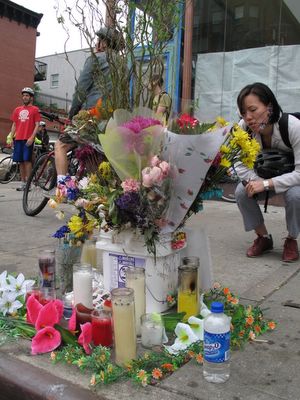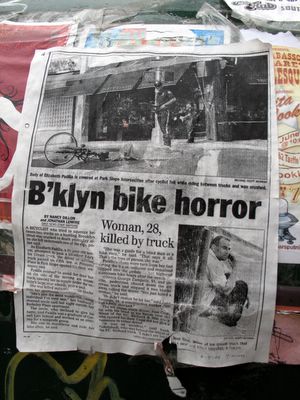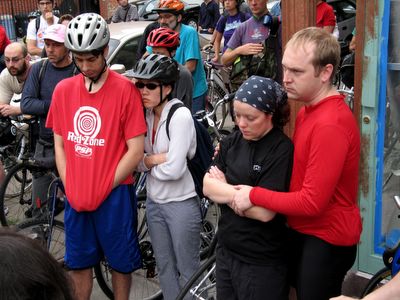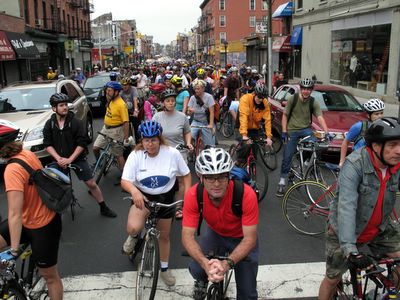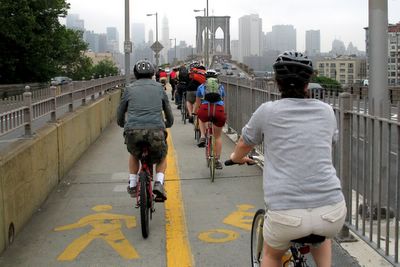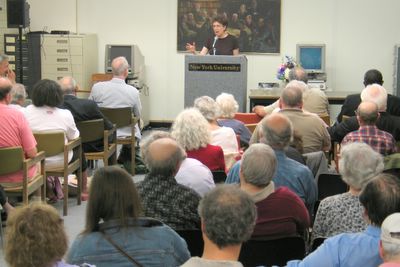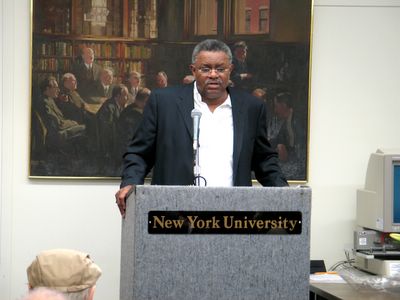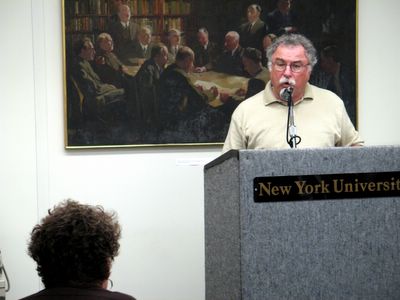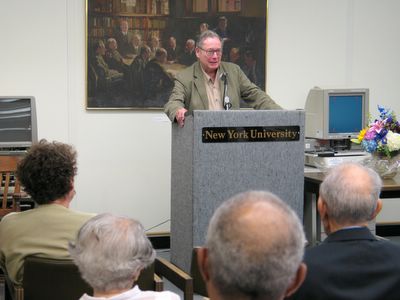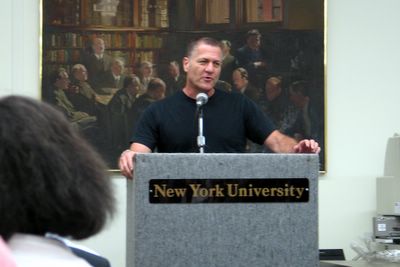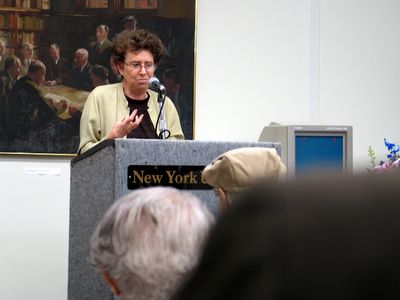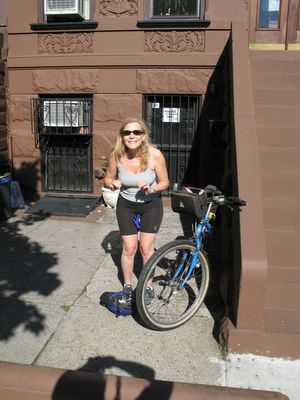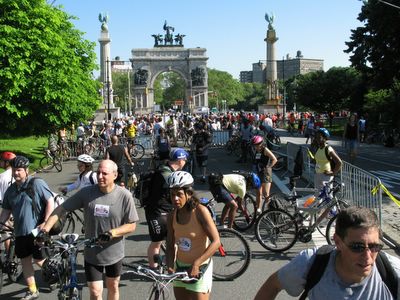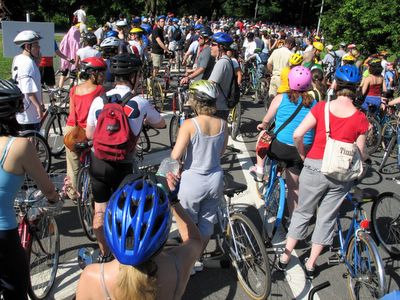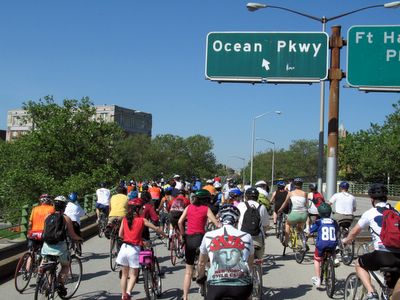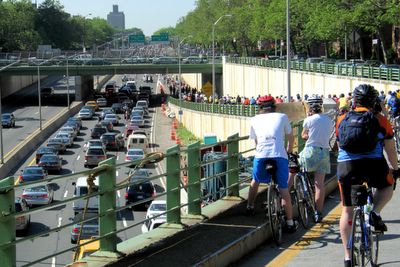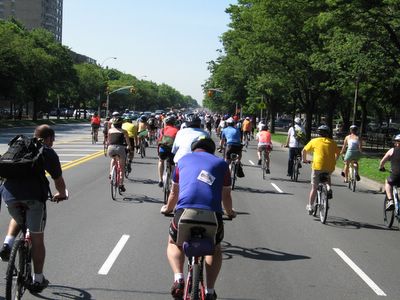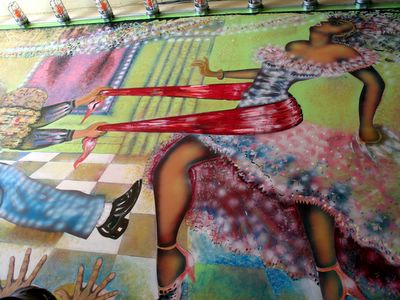My friend, Eric, said he was relieved ... new to my Blog, he had noticed, apprehensively, that my posts were coming fast and furious. And then, suddenly, nothing. "What happened", he wanted to know."I haven't seen one of those blogs for weeks now." Eric, I suspect, is like the rest of us computer users -- our inboxes are deluged and clogged with endless tracts, ads, junk, pleas and exhortations. I commiserated with Eric, being there myself. There's not enough time to read all that. Of course, that doesn't apply to my blog.
But as for writing, it's the summer, that's what I blame it on. Things just slow down in the summer.(Ain't that grand?) And so does my desire to write and snap. On top of that, I did what I had been contemplating doing for many months -- removed my long-faltering hard drive (the faltering was rapidly becoming failing), inserted a new one and, for the past few days, have been endlessly re-installing Windows XP, a myriad of programs and utilities that I use and depend on and all my data (which I had meticulously backed up; I've learned that lesson). It's a process I've visited several times before. Each time, with dread.
And so, I've delayed. But the time came and I was forced to proceed. The upside of that is my computer now behaves like it did when I first purchased it - snappy and speedy. It obeys my every command. I still haven't finished the job. I installed my most heavily used programs. The rest will come over the weeks ahead on a need-to-use basis.
......
Ah yes, the title of this post: Dinner On The East River. I knew I had something on my mind. As our esteemed, former Vice President Quayle (VP-Potatoe) once said, "A mind is a terrible thing to lose."
Last night, Stacey and I joined several hundred others on Bargemusic's floating barge at the foot of Atlantic Avenue. The occasion was the annual fundraiser for Brooklyn Parents For Peace. It was a beautiful, if hot and steamy, evening. But being out on the river with its beautiful breezes helped to cool our sweaty brows. On the other hand, being on the river with its vigorous current and waves, also helped to slowly and gently rock the moored barge up and down and back and forth which induced a slightly queasy feeling in the pit of my stomach.
A chamber music trio was playing sweet tunes as we feasted on a wonderful spread of foods that had been donated by local merchants. We took our dishes out onto the deck of the barge to enjoy the magnificent view: the Brooklyn Bridge, the river with boats sailing by and an assortment of people on the adjacent pier, out to enjoy a beautiful summer night on the East River.
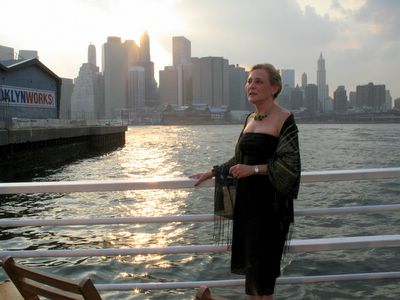
Tuesday, June 28, 2005 - enjoying the warm breezes of the East River.
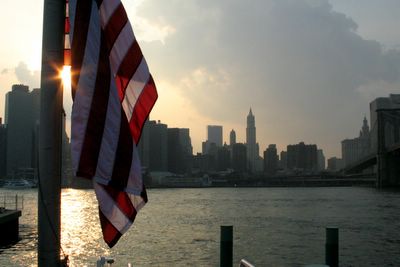
Sunset on the river - and a time to reflect on the country's direction.
While we were partying with our fellow peace activists, the President (he's not my president) was defending his fast-sinking war on Iraq. As New York Congressmember, Louise Slaughter wrote in her blog --
President Bush spoke tonight and his silence was deafening. If anyone was surprised... if anyone was shocked to see their Commander-In-Chief so divorced from reality, they really haven't been paying much attention.
But day by day more Americans are seeing the light. Each day they see the news... More casualties. More wounded. Billions of dollars lost or wasted. Congress cutting off veterans benefits. New memos discovered detailing White House plans to invade Iraq using manipulated or manufactured evidence. The list goes on and on.
After we finished our dinner and enjoyed the views, it was time to get down to the business of the evening. This dinner was called to raise funds for the job ahead. Brooklyn Parents has grown so large that it now has an office and a full-time staff. That takes lots of money, but it's money well spent. They are very effective, reaching a broad population in downtown Brooklyn and beyond. Hundreds of newspaper clippings from local papers were on display to attest to the wide coverage the group commands.
As an aside, I urge my readers to send a contribution to keep this organization going and growing. You can make an online donation by clicking right here: Brooklynpeace.org . Or, you can send it in the old fashioned way --
Brooklyn Parents for Peace
138 Court Street
PMB 416
Brooklyn, NY 11201
Another purpose of the evening was to honor those in our community who had made a significant contribution to the cause of peace. This year we were honoring Congressmembers Major Owen and Nydia Velasquez (both of whom could not attend due to an important evening vote in Washington), The venerable War Resistors League and Debbie Almontaser, an educator who is a Boardmember of Women in Islam and a tireless community activist.
Short "thank yous" were said, plaques and bouquets, expressing our appreciation, handed out and then the evening ended with some more music and socializing. It was, indeed, a wonderful night out on the shores of Brooklyn.
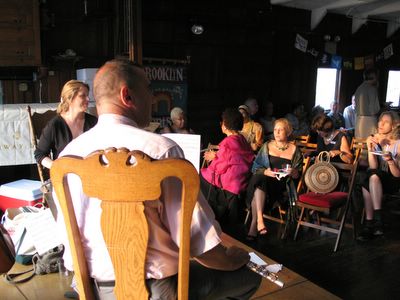
Lovely music by which to dine.
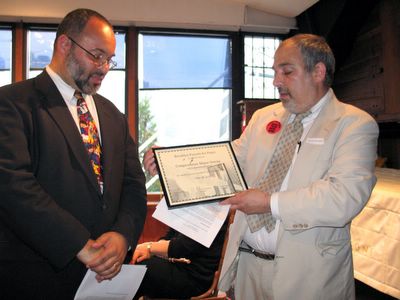
David Tykulsker, of Brooklyn Parents, presents certificate of appreciation to Chris Owens (son of Rep. Major Owens, who was detained in Washigton).
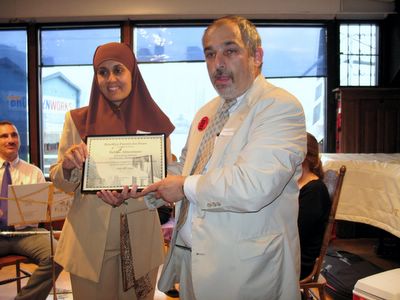
Community activist, Debbie Almontaser receives her award.
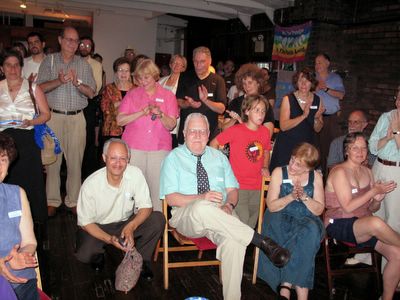
Part of the crowd at the fundraiser on the barge.
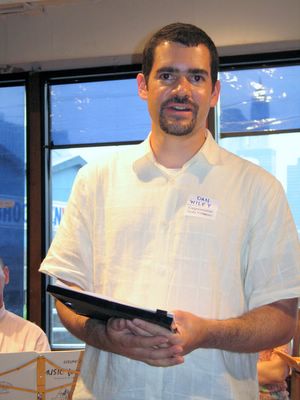
Dan Wiley, representing Rep. Lydia Velasquez, says thank you.
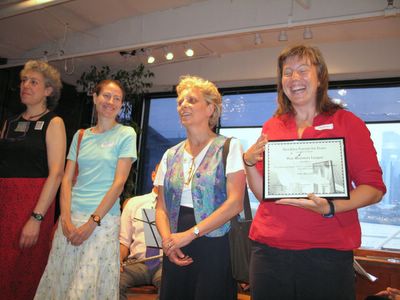
Representing the War Resistors League, four women accept the award of honor.

Olga Bloom, founder and chair of Bargemusic - receives a big thank you from all of us.
